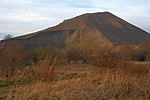Castleton, North Yorkshire

Castleton is a village on the River Esk, part of the civil parish of Danby in the county of North Yorkshire in England. It can be found 7.1 miles (11.5 km) south-east of Guisborough, in the North York Moors. There was once a medieval castle sited on Castle Hill that is thought to have been abandoned when Danby Castle was constructed.Castleton has a local school, church and two public houses, as well as a small Co-op supermarket, a tea room and a public toilet. Castleton is a centre for walking, birdwatching, shooting and many other pursuits. It is said that Castleton was named after a castle built near the River Esk. The village has a Clapper bridge that spans Danby Beck; this bridge was listed as Grade II in 2016.Castleton has a primary school (Castleton Community Primary School) with secondary education available at Caedmon College or Eskdale School, which are both in Whitby.In times past Castleton was actually the main market and industrial town serving Upper Eskdale. There were annual wool, cheese and cattle fairs, cheese market and a silk mill. There is a show held at Castleton every September on the second Saturday in the month.
Excerpt from the Wikipedia article Castleton, North Yorkshire (License: CC BY-SA 3.0, Authors, Images).Castleton, North Yorkshire
Castle Close,
Geographical coordinates (GPS) Address Nearby Places Show on map
Geographical coordinates (GPS)
| Latitude | Longitude |
|---|---|
| N 54.463617 ° | E -0.939256 ° |
Address
Castle Close
Castle Close
YO21 2ES , Danby
England, United Kingdom
Open on Google Maps









